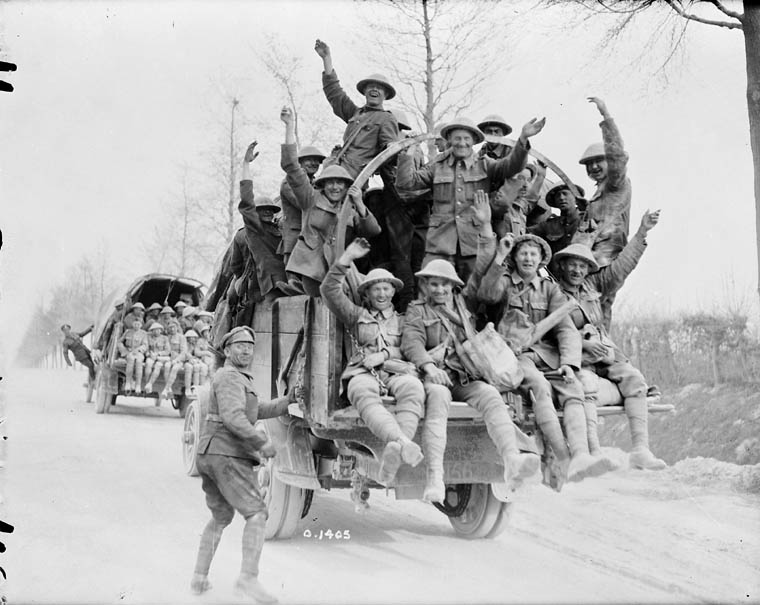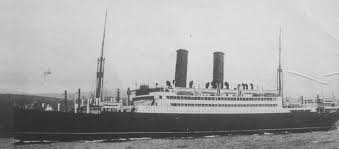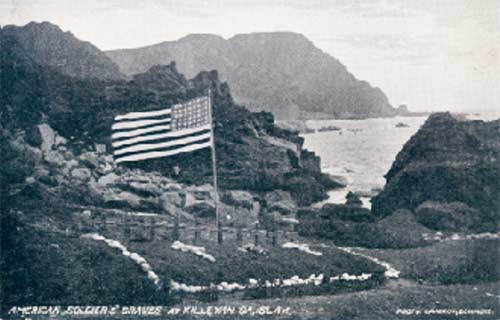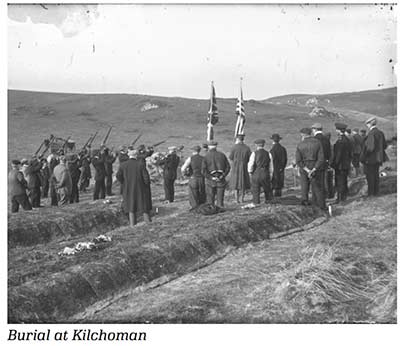Millions of Americans Crossing the Atlantic
Germany’s First Target at Sea: the Tuscania.
Special to The Great War Project
(18 February) The build-up of American troops on the Western Front is proceeding far too slowly, and the Americans know it. The Americans “feared the worst for the coming year,” writes one American officer a century ago.
“From a military point-of-view Germany is stronger in the West today than it has been since 1914.” Germany has 170 divisions against Britain’s 54 and French 93.

Canadian troops in northern France.
That translates into more than half a million men for the British, nearly a million for the French.
But with Germany no longer fighting a two-front war – a war against the Allies in the West, and Russia in the East — it is moving millions of troops from the Eastern to the Western Front.
By the end of January 1918, the Americans have a mere 180,000 troops in France, and only 85,000 of them “are with the fighting troops.”
But that is set to change. “In the scales against this gloomy foreboding,” writes historian Gary Mead, “was set the gathering flood of doughboys sailing across the Atlantic.”
The crossing is not without its risks. German U-boats still lurk in the waters off the coast of England and Ireland. They still attack the ships carrying troops from America.

The Tuscania
One in particular was a deadly attack on the ocean liner Tuscania, sister ship of the much better known Lusitania, sunk by a German submarine in 1915.
The Tuscania “was the first troopship,” Mead reports, “carrying doughboys from the United States to France to be torpedoed in the First World War. She was attacked without warning in that killing ground favored by U-boats off the coast of Ireland.”
“The Tuscania,” Mead writes, “was the biggest disaster in the ferrying of American soldiers to Europe.” On her last voyage, she left the port of Hoboken, New Jersey on January 24, 1918. She carried more than 2,000 American soldiers as well as a British crew of 384. She sailed in a convoy of thirteen ships…
In a ferocious squall, “it was a miracle the U-boat could see anything at all.”
…Mead writes.
The ship was hit by a single torpedo. According to historian Mead, “As so often, it was not the torpedo itself which caused the large loss of life, but the appalling weather conditions, the subzero temperature of the sea, and the swift onset of pitch-black night, making searches impossible.

A memorial to the Americans who died on the Tuscania.
The destroyer rescuers brought into the northern Irish port of Londonderry about 1350.” And another 550 were brought into a second port.”
“Hundreds of others,” Mead reports, were thrown onto the coast in their lifeboats. Some sank beneath the waves very quickly.”
It was here, Mead reports, “that so many were killed or drowned when their boats crashed upon the rocks.”
“The people of the island did all that was humanly possible to rescue them. While they did save hundreds who might otherwise have been lost, 182 of the Tuscania’s soldiers were flung ashore lifeless.”
According to historian Mead, “this was the first time that a vessel filled with American troops on their way to the theater of war had gone to the bottom.”

Burial of the dead from the Tuscania.
Had it not been for the convoy and pure luck, most of the 2500 on board would probably have perished.

A minor technicality: a “sister ship” is a ship of virtually identical design and layout to another ship. SS Transylvania was the true sister ship to the SS Tuscania. RMS Lusitania’s sister ship was RMS Mauretania. True, the SS Tuscania and the RMS Lusitania were both operating under the Cunard Line banner, as did Transylvania and Mauretania, but Tuscania was about 14000 tons and 580 feet long with two smokestacks, whereas Lusitania was 31500 tons and nearly 800 feet long with four stacks.